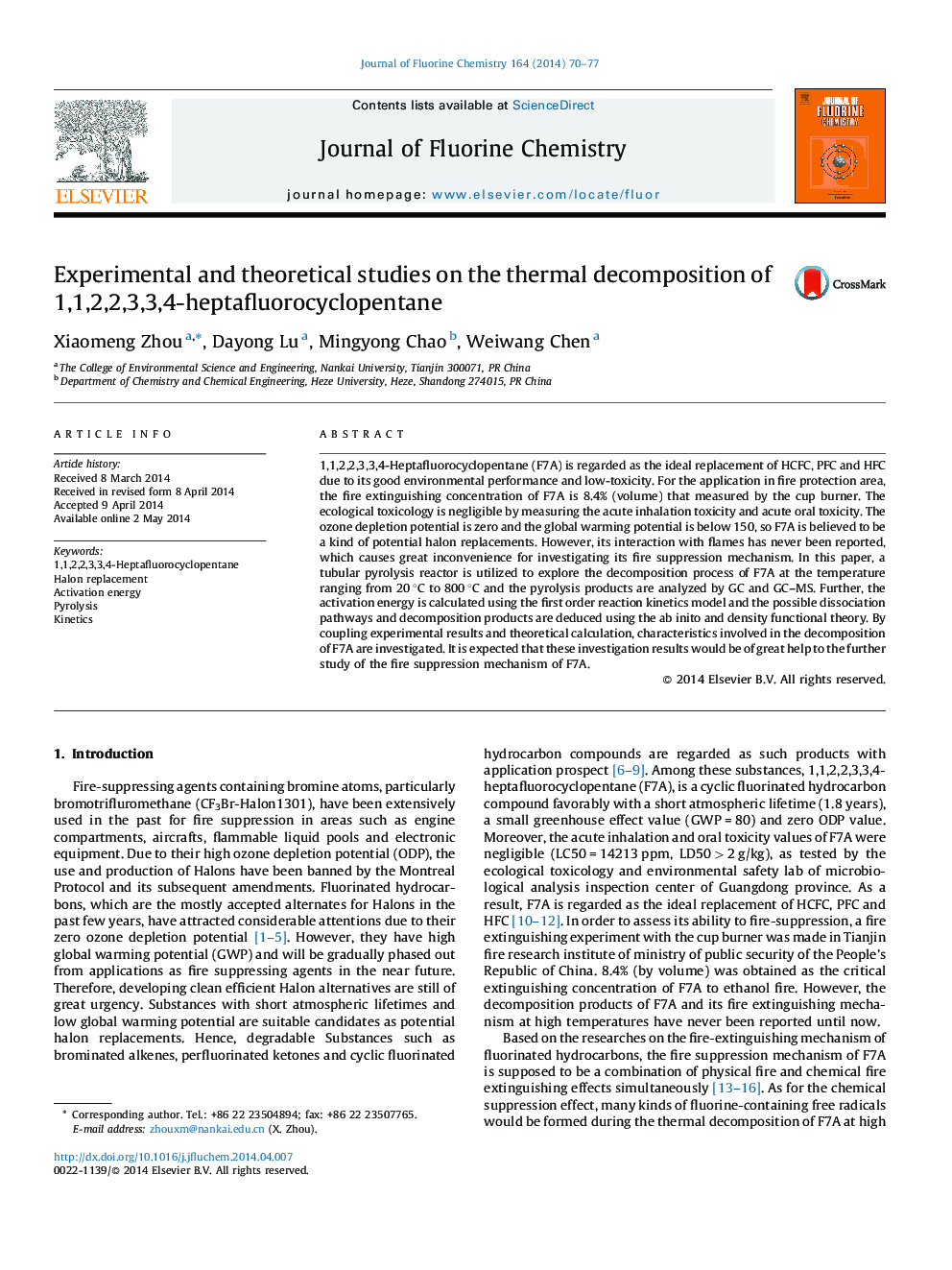| Article ID | Journal | Published Year | Pages | File Type |
|---|---|---|---|---|
| 1314057 | Journal of Fluorine Chemistry | 2014 | 8 Pages |
•Pyrolysis characteristics of F7A were studied under various temperatures.•The lowest dissociation energy of F7A is proposed.•Theoretical results calculated by Gaussian 03 agree well with experimental results.•Thermal decomposition products and dissociation pathways of F7A were discussed.
1,1,2,2,3,3,4-Heptafluorocyclopentane (F7A) is regarded as the ideal replacement of HCFC, PFC and HFC due to its good environmental performance and low-toxicity. For the application in fire protection area, the fire extinguishing concentration of F7A is 8.4% (volume) that measured by the cup burner. The ecological toxicology is negligible by measuring the acute inhalation toxicity and acute oral toxicity. The ozone depletion potential is zero and the global warming potential is below 150, so F7A is believed to be a kind of potential halon replacements. However, its interaction with flames has never been reported, which causes great inconvenience for investigating its fire suppression mechanism. In this paper, a tubular pyrolysis reactor is utilized to explore the decomposition process of F7A at the temperature ranging from 20 °C to 800 °C and the pyrolysis products are analyzed by GC and GC–MS. Further, the activation energy is calculated using the first order reaction kinetics model and the possible dissociation pathways and decomposition products are deduced using the ab inito and density functional theory. By coupling experimental results and theoretical calculation, characteristics involved in the decomposition of F7A are investigated. It is expected that these investigation results would be of great help to the further study of the fire suppression mechanism of F7A.
Graphical abstract1,1,2,2,3,3,4-Heptafluorocyclopentane (F7A) is a new promising halon replacement. Its thermal decomposition is investigated experimentally and theoretically. In this study, a tubular pyrolysis reactor and the ab inito and density functional theory are used to explore its decomposition process including the possible dissociation pathways and decomposition products.Figure optionsDownload full-size imageDownload as PowerPoint slide
